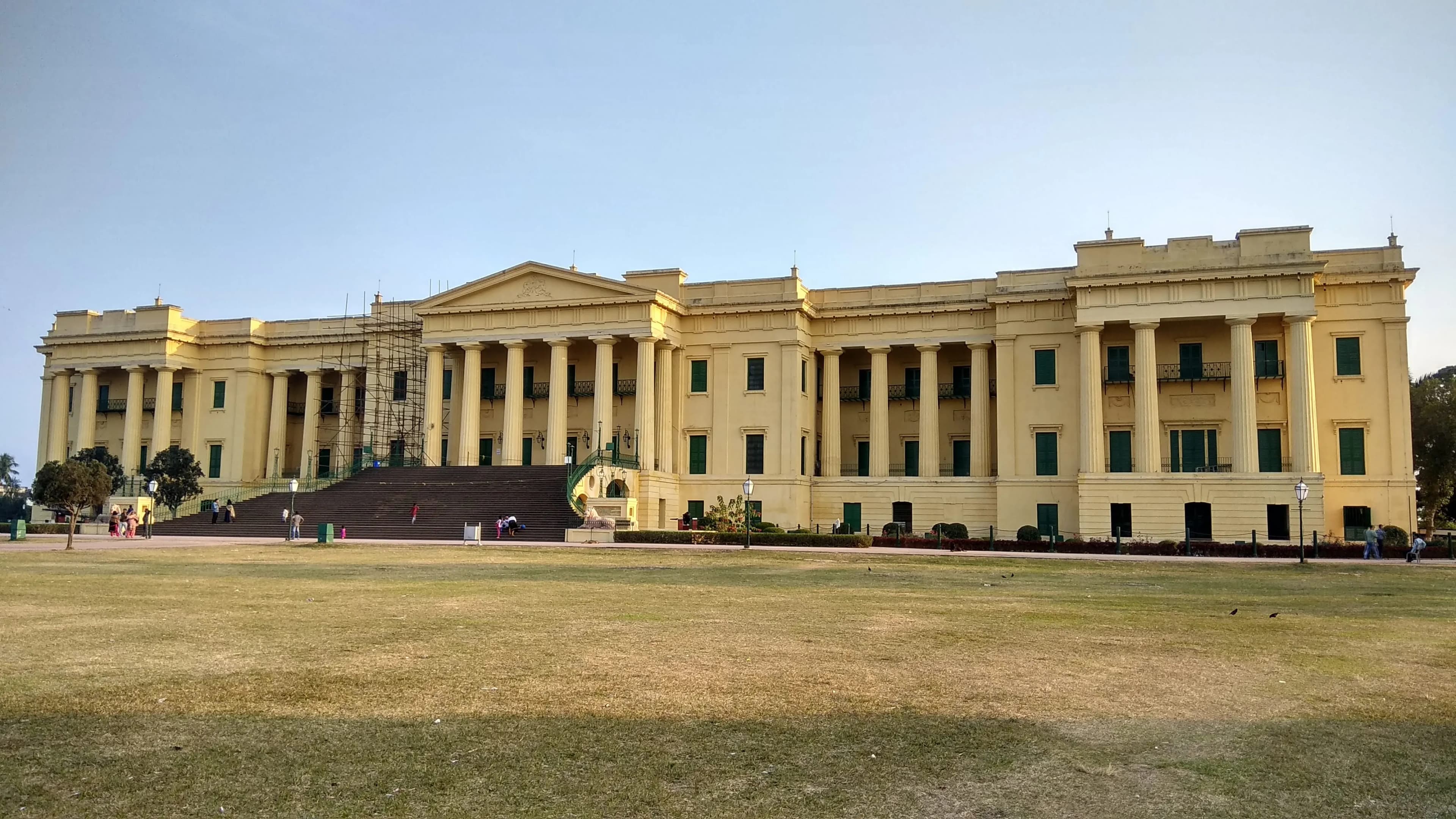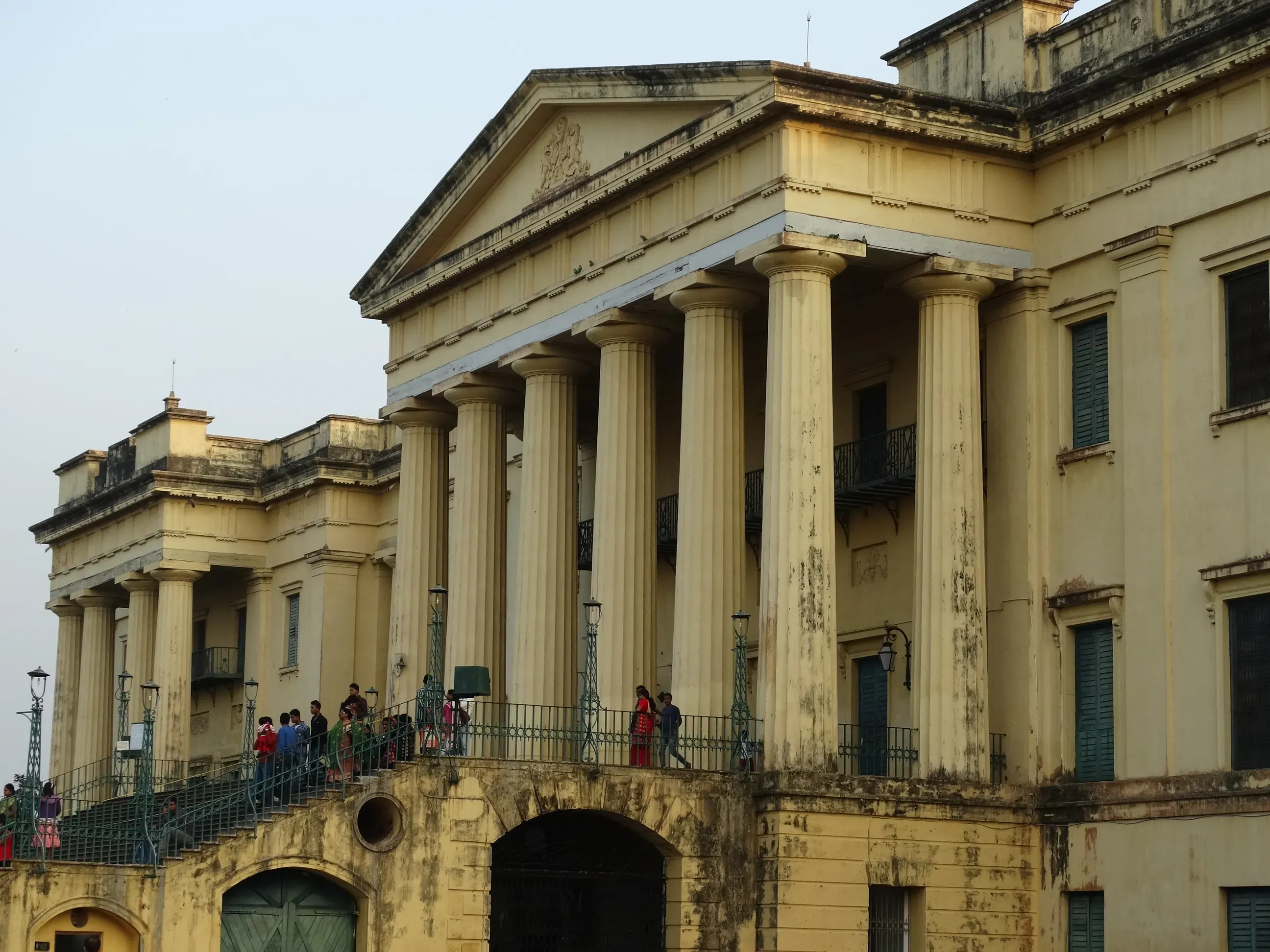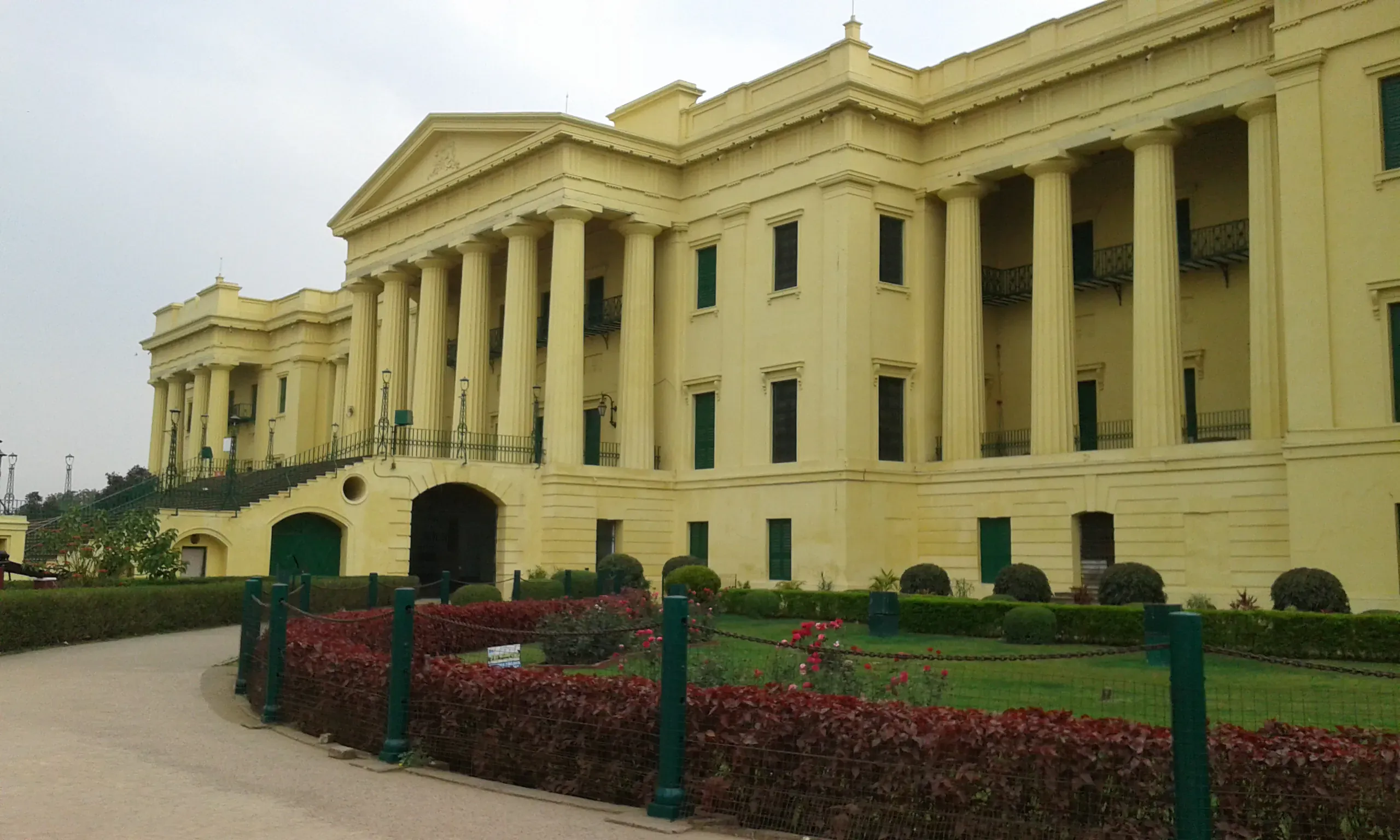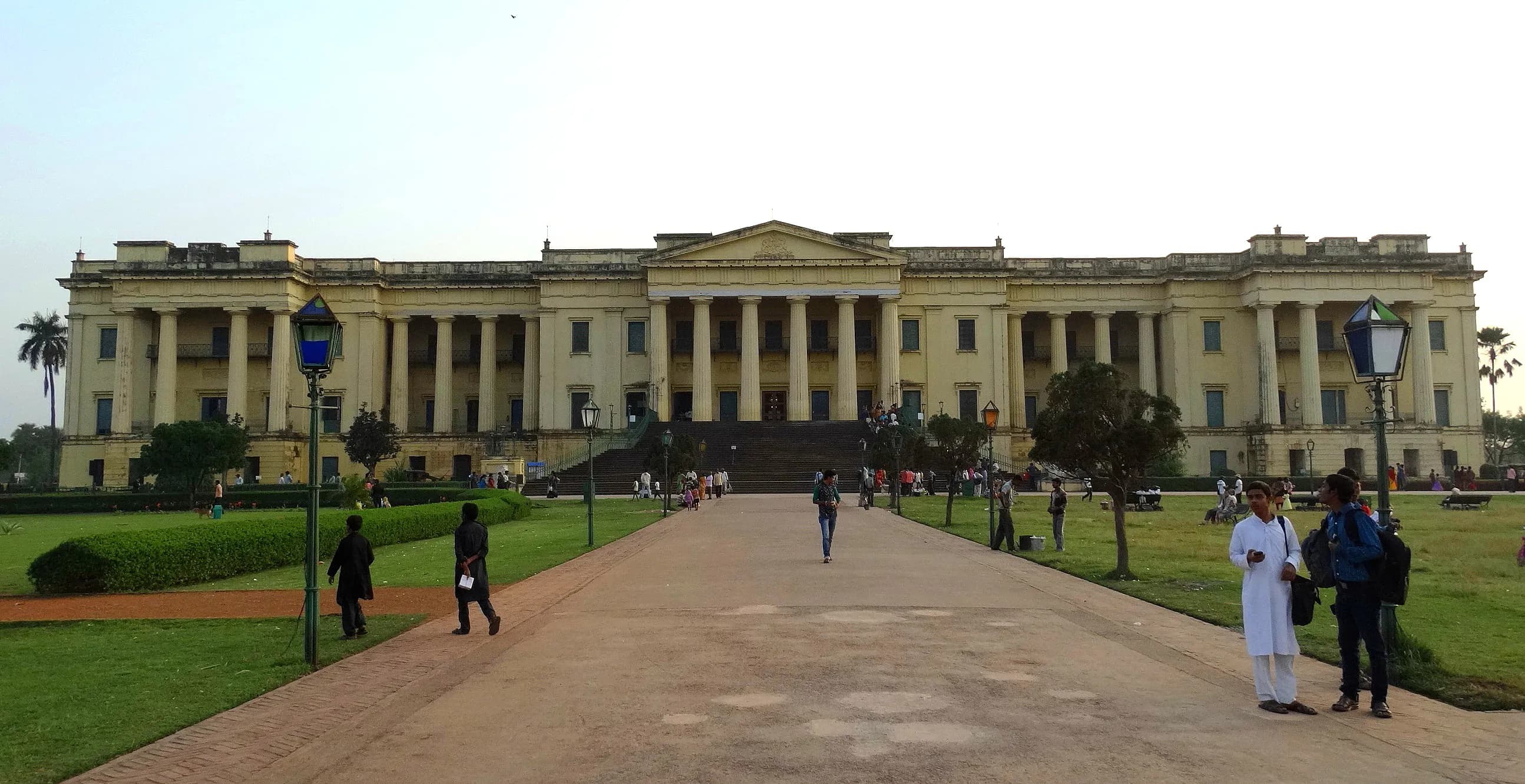










































1 / 43
Hazarduari Palace Murshidabad
Hazarduari Palace, Murshidabad (742149), West Bengal, India
The imposing façade of the Hazarduari Palace, shimmering under the Bengal sun, struck me with its sheer scale. A thousand doors, or so it seemed, gazed out onto the manicured lawns, whispering tales of the Nawabs of Bengal who once held court within these walls. My visit to Murshidabad, a city steeped in history, had led me to this architectural marvel, a testament to a bygone era of opulence and power. Coming from Uttar Pradesh, a region rich with its own Mughal heritage, I was eager to witness the unique blend of European and Islamic influences that define this palace.
Stepping through the grand entrance, I found myself in a vast hall, the air thick with the scent of aged wood and the echoes of history. The name “Hazarduari,” meaning “thousand doors,” is only a slight exaggeration. While not all are actual entrances, the illusion of countless doorways and windows creates a sense of both grandeur and mystery. The real doors, intricately carved with floral motifs and geometric patterns, hint at the craftsmanship that flourished under Nawab Nazim Humayun Jah.
The palace museum, housed within the Hazarduari, is a treasure trove of artifacts. I was particularly captivated by the collection of weaponry. Swords with ornate hilts, gleaming daggers, and imposing cannons spoke of a time when power was often measured by military might. The contrast between these instruments of war and the delicate porcelain, exquisite ivory carvings, and intricate hookahs displayed nearby was stark, highlighting the complexities of the courtly life. I paused before a particularly ornate hookah, imagining the Nawab and his courtiers engaged in leisurely conversation, the fragrant smoke swirling around them.
The European influence on the palace's architecture is undeniable. The symmetrical design, the towering columns, and the grand staircase all bear the hallmarks of European neoclassical style. Yet, these elements are seamlessly blended with Islamic architectural features, such as the arched doorways and the intricate calligraphy adorning the walls. This fusion creates a unique aesthetic that sets the Hazarduari apart. I noticed how the sunlight streamed through the large windows, illuminating the dust motes dancing in the air, casting long shadows that seemed to stretch back through time.
Wandering through the numerous rooms, I was struck by the sheer opulence on display. Crystal chandeliers hung from high ceilings, their facets catching the light and scattering it across the walls. The floors, inlaid with marble and precious stones, felt cool beneath my feet. I peered into the former bedrooms and reception halls, trying to envision the lavish gatherings and intimate moments that must have unfolded within these very walls. The throne room, with its elevated platform and ornate decorations, was particularly impressive, evoking a sense of the Nawab's authority and power.
Beyond the palace walls, the surrounding gardens offered a welcome respite from the grandeur of the interiors. The meticulously manicured lawns, dotted with fountains and flowering shrubs, provided a tranquil setting. I strolled along the pathways, admiring the vibrant colors and inhaling the fragrant air, imagining the Nawabs and their families enjoying the serenity of this private oasis.
My visit to the Hazarduari Palace was more than just a sightseeing trip; it was a journey through time. It offered a glimpse into the lives of the Nawabs of Bengal, their power, their artistry, and their unique cultural blend. As I left the palace grounds, the image of the setting sun casting a golden glow on the “thousand doors” remained etched in my mind, a poignant reminder of a glorious past. The experience provided a valuable comparative perspective to my understanding of Uttar Pradesh's own rich Mughal history, highlighting the diverse tapestry of India's cultural heritage. The Hazarduari Palace stands not just as a building, but as a narrative, whispering stories of a bygone era to those who take the time to listen.
Year Built
1837 CE, 19th Century
Period
British Colonial Period
Architectural Style
Indo-Saracenic Revival, palatial, blends Indian, Islamic, and European styles.
Built By
Nawab Nazim Humayun Jah
Material Used
Brick, Stucco, Marble, Wood, Iron
Heritage Status
Hazarduari Palace is a centrally protected monument of national importance, under the stewardship of the Archaeological Survey of India (ASI). This status accords it the highest level of legal protection against alteration, demolition, or misuse. It ensures that all conservation and maintenance activities are conducted according to strict scientific principles and international heritage charters, safeguarding its historical and architectural integrity for the nation and the world.
Hazarduari Palace Murshidabad
overview
Overview data: 94% complete
Heritage Overview
Palace
Hazarduari Palace Murshidabad
The imposing façade of the Hazarduari Palace, shimmering under the Bengal sun, struck me with its sheer scale. A thousand doors, or so it seemed, gazed out onto the manicured lawns, whispering tales of the Nawabs of Bengal who once held court within these walls. My visit to Murshidabad, a city steeped in history, had led me to this architectural marvel, a testament to a bygone era of opulence and power. Coming from Uttar Pradesh, a region rich with its own Mughal heritage, I was eager to witness the unique blend of European and Islamic influences that define this palace.
Stepping through the grand entrance, I found myself in a vast hall, the air thick with the scent of aged wood and the echoes of history. The name “Hazarduari,” meaning “thousand doors,” is only a slight exaggeration. While not all are actual entrances, the illusion of countless doorways and windows creates a sense of both grandeur and mystery. The real doors, intricately carved with floral motifs and geometric patterns, hint at the craftsmanship that flourished under Nawab Nazim Humayun Jah.
The palace museum, housed within the Hazarduari, is a treasure trove of artifacts. I was particularly captivated by the collection of weaponry. Swords with ornate hilts, gleaming daggers, and imposing cannons spoke of a time when power was often measured by military might. The contrast between these instruments of war and the delicate porcelain, exquisite ivory carvings, and intricate hookahs displayed nearby was stark, highlighting the complexities of the courtly life. I paused before a particularly ornate hookah, imagining the Nawab and his courtiers engaged in leisurely conversation, the fragrant smoke swirling around them.
The European influence on the palace's architecture is undeniable. The symmetrical design, the towering columns, and the grand staircase all bear the hallmarks of European neoclassical style. Yet, these elements are seamlessly blended with Islamic architectural features, such as the arched doorways and the intricate calligraphy adorning the walls. This fusion creates a unique aesthetic that sets the Hazarduari apart. I noticed how the sunlight streamed through the large windows, illuminating the dust motes dancing in the air, casting long shadows that seemed to stretch back through time.
Wandering through the numerous rooms, I was struck by the sheer opulence on display. Crystal chandeliers hung from high ceilings, their facets catching the light and scattering it across the walls. The floors, inlaid with marble and precious stones, felt cool beneath my feet. I peered into the former bedrooms and reception halls, trying to envision the lavish gatherings and intimate moments that must have unfolded within these very walls. The throne room, with its elevated platform and ornate decorations, was particularly impressive, evoking a sense of the Nawab's authority and power.
Beyond the palace walls, the surrounding gardens offered a welcome respite from the grandeur of the interiors. The meticulously manicured lawns, dotted with fountains and flowering shrubs, provided a tranquil setting. I strolled along the pathways, admiring the vibrant colors and inhaling the fragrant air, imagining the Nawabs and their families enjoying the serenity of this private oasis.
My visit to the Hazarduari Palace was more than just a sightseeing trip; it was a journey through time. It offered a glimpse into the lives of the Nawabs of Bengal, their power, their artistry, and their unique cultural blend. As I left the palace grounds, the image of the setting sun casting a golden glow on the “thousand doors” remained etched in my mind, a poignant reminder of a glorious past. The experience provided a valuable comparative perspective to my understanding of Uttar Pradesh's own rich Mughal history, highlighting the diverse tapestry of India's cultural heritage. The Hazarduari Palace stands not just as a building, but as a narrative, whispering stories of a bygone era to those who take the time to listen.
Location
Hazarduari Palace, Murshidabad (742149), West Bengal, India(West Bengal)
Year Built
1837 CE, 19th Century
Heritage Status
Hazarduari Palace is a centrally protected monument of national importance, under the stewardship of the Archaeological Survey of India (ASI). This status accords it the highest level of legal protection against alteration, demolition, or misuse. It ensures that all conservation and maintenance activities are conducted according to strict scientific principles and international heritage charters, safeguarding its historical and architectural integrity for the nation and the world.
Visit Information
Visiting Hours
Hazarduari Palace: 10:00 AM - 5:30 PM, Closed on Fridays.
Entry Fee
₹20 for Indians, ₹500 for foreigners.
Heritage Status
Hazarduari Palace is a centrally protected monument of national importance, under the stewardship of the Archaeological Survey of India (ASI). This status accords it the highest level of legal protection against alteration, demolition, or misuse. It ensures that all conservation and maintenance activities are conducted according to strict scientific principles and international heritage charters, safeguarding its historical and architectural integrity for the nation and the world.
Preservation Status
From my professional assessment, the preservation status is 'Excellent,' but this is a dynamic state achieved through continuous effort. The major structural and aesthetic elements are stable and well-maintained following significant restoration work. However, a building of this age, material composition, and visitor traffic is perpetually vulnerable. Our ongoing monitoring programs are crucial for early detection of issues like material decay or structural stress, allowing us to transition from reactive restoration to proactive, preventative preservation, which is the gold standard in heritage management.
Historical Context
The shimmering white edifice of Hazarduari Palace, standing regally on the banks of the Bhagirathi in Murshidabad, whispers tales of a bygone era – a period of transition, of waning Mughal power and burgeoning British influence. Its construction, initiated by Nawab Nazim Humayun Jah in 1829 and completed in 1837, marks a significant chapter in the history of Bengal, reflecting the complex dynamics between the declining Nawabs and the ascendant East India Company. Murshidabad, once the vibrant capital of Bengal Subah under the Mughals, had witnessed its glory fade as the Company consolidated its grip on the Indian subcontinent.
The very name "Hazarduari," meaning "thousand doors" (though it actually has a little over a hundred), speaks to the grandeur envisioned by Humayun Jah. He, like his predecessors, held the title of Nawab Nazim, a position that had become largely ceremonial under the British. The construction of such a lavish palace, during a period when the Nawabs were increasingly reliant on the Company's financial support, can be interpreted in multiple ways. It was perhaps an attempt to maintain a semblance of the past glory, a desperate clinging to the vestiges of power and prestige. It could also be seen as a strategic move to impress the British, showcasing the Nawab's continued relevance and influence, even within the confines of their imposed subsidiary alliance.
The timing of the palace's construction coincides with a crucial phase of British colonial policy. The East India Company, having secured its position through military and economic dominance, was transitioning from a primarily mercantile entity to a governing power. Lord William Bentinck, the Governor-General of India during this period, implemented several reforms aimed at consolidating British control and modernizing Indian administration. These reforms, while presented as progressive, often undermined existing indigenous institutions and further marginalized the native rulers.
Humayun Jah's reign (1824-1838) fell within this period of Bentinck's reforms. The Nawab, caught between the demands of his people and the dictates of the Company, had limited agency. The construction of Hazarduari, therefore, can also be viewed within the context of this constrained autonomy. It was perhaps a way for Humayun Jah to channel his resources and energies into a project that, while symbolic, allowed him some degree of control and self-expression within the tightening grip of British authority.
The architectural style of Hazarduari itself reflects this confluence of influences. While predominantly Indo-Islamic in its overall structure, it incorporates distinct European elements, particularly in its interior design. The grand staircase, the chandeliers, and the furniture reflect the growing influence of European tastes and aesthetics on the Indian aristocracy. This blend of architectural styles mirrors the broader socio-political landscape of the time, where Indian traditions and British impositions were increasingly intertwined.
The palace also houses the Nizamat Imambara, a grand Shia mosque built adjacent to Hazarduari. This further underscores the complex religious and cultural tapestry of Murshidabad during this period. The Nawabs of Bengal were Shia Muslims, while the majority of the population was Sunni. The presence of the Imambara, alongside the palace, highlights the Nawabs' patronage of Shia Islam and their efforts to maintain their religious identity within a changing political landscape.
The subsequent history of Hazarduari further reinforces its significance as a witness to the changing fortunes of Bengal. After the annexation of Awadh by the British in 1857, Wajid Ali Shah, the last Nawab of Awadh, was exiled to Murshidabad and resided within the Hazarduari complex. This event marked the final eclipse of Mughal power in India and further solidified British dominance. Hazarduari, once a symbol of the Nawabs' authority, became a poignant reminder of their lost sovereignty.
Today, Hazarduari Palace stands as a museum, its opulent halls filled with artifacts and relics from the Nawabi era. It serves as a tangible link to a pivotal period in Indian history, a period marked by the decline of one empire and the rise of another. Its story is not merely a description of architectural splendor, but a narrative of political intrigue, cultural exchange, and the complex interplay of power and identity in colonial India. It is a story that resonates with the broader historical narrative of Uttar Pradesh as well, where the echoes of Mughal grandeur and the impact of British colonialism are deeply intertwined.
Archaeological Survey
Archaeological Survey of India (ASI), Hazarduari Palace Museum, West Bengal Directorate of Archaeology & Museums.
Architectural Details
Indo-Saracenic Revival, palatial, blends Indian, Islamic, and European styles.
British Colonial Period
Built by
Nawab Nazim Humayun Jah
Materials
Brick, Stucco, Marble, Wood, Iron
Dimensions
Height23.16m
Width24.15m
Length1045.83m
Area4144.9m²
Location Map
Featured Images




Excavation Details
During my research on the Hazarduari Palace, I found no records of formal archaeological excavations. The palace, completed in 1837, stands on the site of a previous palace destroyed by fire. While anecdotal accounts mention buried structures and treasures, no systematic digs have confirmed these. The current structure's foundations likely incorporate remnants of the earlier palace, but remain unexcavated.
Restoration Work
Hazarduari Palace's restoration involved structural repairs, strengthening foundations, and addressing water damage. Conservation efforts focused on the intricate stucco work, ornate doorways, and the extensive collection of paintings, manuscripts, and weaponry. The project aimed to preserve the palace's architectural integrity and showcase its historical significance as a former Nawab's residence.
Patronage
Nawab Nazim family
Construction Technique
Having studied Uttar Pradesh's architectural heritage, Hazarduari's construction impressed me. The thousand doors (many false) are set within Indo-Saracenic styled walls, clearly demonstrating brick-and-mortar construction, plastered and painted, with some exquisite marble work within.
Architectural Influences
8 items
Building Techniques
Hazarduari Palace, showcasing Indo-Saracenic architecture, utilizes robust brick-and-mortar construction prevalent in the region and influenced by techniques from Uttar Pradesh. The specialized groundwork likely involved a deep foundation system, possibly incorporating lime-stabilized soil or brick-bat concrete, considering the scale and weight of the structure. This would have mitigated differential settlement in the alluvial soil common to the Gangetic plains. The extensive use of brick, readily available locally, contributed to the building's thermal mass, moderating internal temperatures against the extreme heat of Murshidabad. The thick brick walls, plastered with stucco (likely lime-based), further enhanced insulation and provided a smooth surface for decorative paintwork. The "thousand doors" concept, while aesthetically driven, also played a role in natural ventilation. The placement and orientation of these openings, even the false ones, could have been strategically designed to facilitate cross-ventilation, capturing prevailing breezes and promoting airflow within the palace. This passive cooling technique, coupled with the thermal mass of the walls, would have significantly reduced reliance on artificial cooling methods. The building blocks themselves, primarily bricks, were likely fired in traditional kilns, producing variations in colour and texture, adding to the visual appeal. The use of stucco, a mixture of lime, sand, and water, allowed for intricate detailing and ornamentation on the brick surfaces. The incorporation of marble, particularly for interior elements, reflects the influence of Mughal architecture and adds a touch of luxury. The structural role of wood and iron, while not explicitly visible in the exterior, would have been crucial for supporting roofs, floors, and decorative elements. Timber beams and columns, possibly reinforced with iron straps, would have formed the internal framework, while iron would have been used for railings, grills, and other decorative features. The integration of these materials showcases a sophisticated understanding of material properties and construction techniques prevalent during that era.
Coordinates
24.182400, 88.264700
Accessibility Info
{"notes":"Hazarduari Palace, meaning 'palace with a thousand doors' (though it has far fewer), is a significant historical site showcasing the rich Nawabi culture of Bengal. It houses a museum with an extensive collection of artifacts, including weapons, paintings, and palanquins. Visitors should be mindful of the historical significance and behave respectfully. Photography restrictions may apply in certain areas.","restrooms":"Available, but their accessibility may be limited.","wheelchair_accessible":"Partially. The ground floor may be accessible, but the upper floors are likely not due to the building's age and design. Ramps or elevators may not be available. It's advisable to contact the museum authorities in advance to confirm accessibility features and plan your visit accordingly."}
Visitor Facilities
8 items
Best Visit Times
For optimal viewing of Hazarduari Palace's architectural nuances, visit between October and March. The pleasant weather and soft winter light enhance the intricate Indo-Saracenic details. Avoid harsh midday sun; mornings or late afternoons offer ideal lighting conditions.
Seasonal Events
8 items
Visitor Restrictions
Modest dress required; photography restricted in some areas; maintain respectful silence; some sections accessible only with special permission from the Nawab Nazim family.
View Count
300
Is Featured
Yes
Is Published
Yes
Completion Score
75
Completion Status
complete
Created At
2025-09-03T13:08:07.342826+00:00
Updated At
2025-09-04T10:34:09.032+00:00